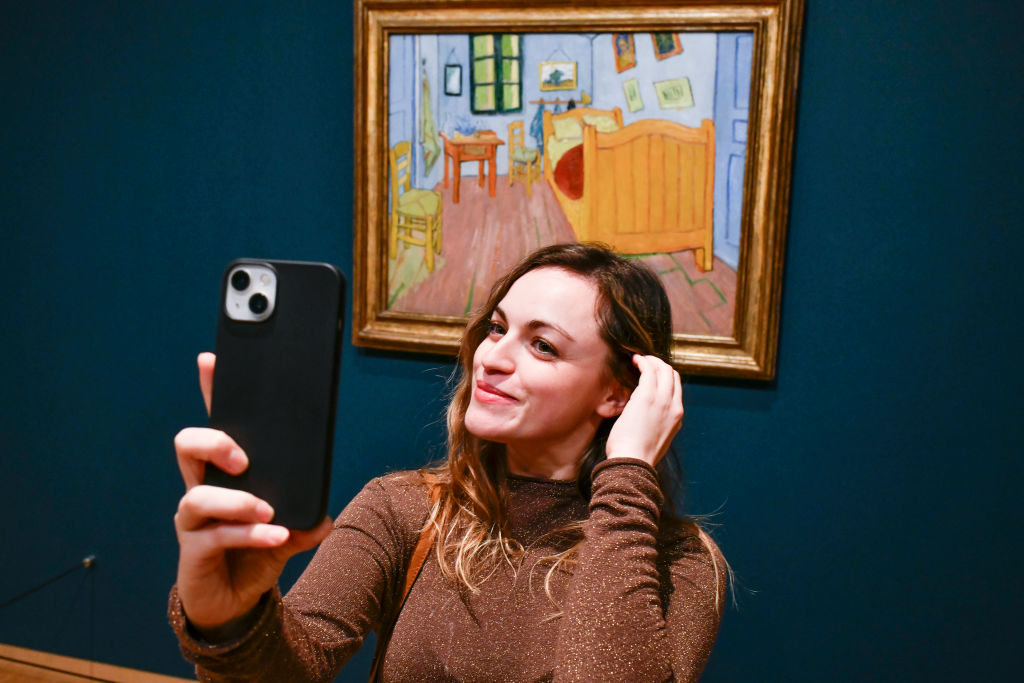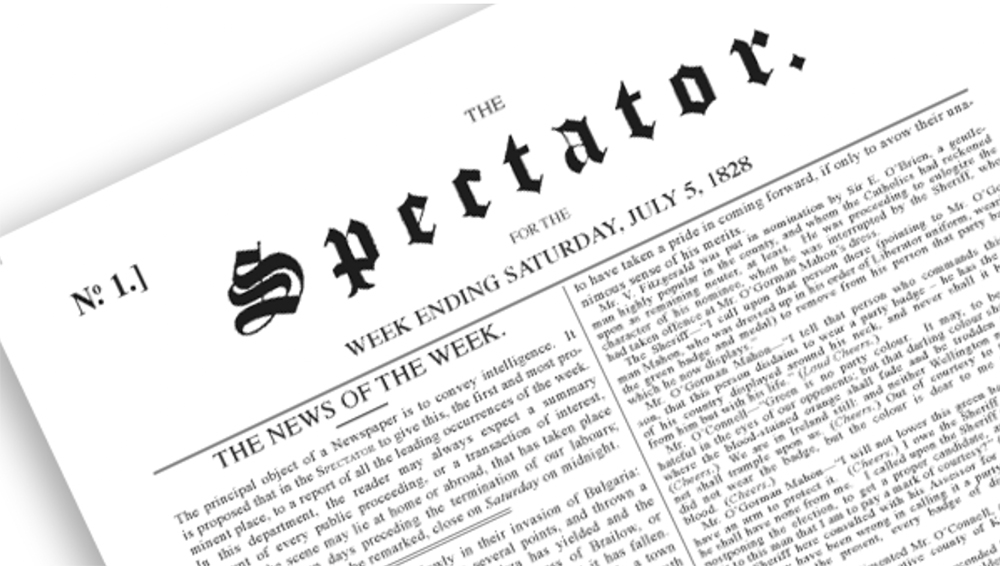There is nothing more glorious than an art gallery selfie. In the same way that hearing someone mispronounce Van Gogh lets you know you’re dealing with an autodidact (the best!), so a gallery selfie suggests someone who doesn’t quite belong in that space: someone who is ignorant of the etiquette of the art world and who is enjoying themselves because of, not despite, that.
Complaining about taking selfies in galleries is so obviously a class thing (not to mention an age thing). Which is why it’s so charming to see Tate Britain’s director Alex Farquharson (whose name does not make him sound like a class warrior) enthuse about encouraging visitors to take ‘Instagrammable pictures’ of the gallery’s work in an effort to entice tourists in. The rest of the art world is appalled, but I stand with Farquharson.
Madrid’s Prado Museum and New York’s Frick Collection already ban visitors from taking photographs with phones. The director of Florence’s Uffizi is threatening action against visitors ‘coming to museums to make memes or take selfies for social media’ after a man became so enraptured by Anton Domenico’s portrait of Ferdinando de’ Medici he tried to recreate the Tuscan prince’s jaunty pose and accidentally fell backwards, tearing the 18th-century canvas.
Surely that accident isn’t nearly as offensive as the Just Stop Oil cretins deliberately spraying masterpieces with soup. While JSO’s actions stink of entitlement, of Phoebes so spoilt by access to art they don’t care if they stop everyone else seeing it, by contrast there’s something rather sweet about someone so excited by encountering a painting for the first time that they’re overcome by the desire to be part of it.
Sure, selfie snappers can be irritating. I’ve sat in the Rothko room at the Tate irked at having my melancholy shattered by cheerful influencers pouting in front of the Seagram murals. And thought how ironic it was – since Rothko so despised the fashionable crowds he thought would see the painting at the Four Seasons restaurant in New York (which the series was commissioned for) that he decided ‘to paint something that will ruin the appetite of every son of a bitch who ever eats in that room’. Still, such self-snappers are no more ignorant than the curators who once accidentally hung two of the Tate’s Rothko paintings upside down.
I’ve waited impatiently at the National Gallery for tourists to stop photographing their own faces so I might catch a glimpse of ‘Sunflowers’ and wondered what Van Gogh would think. Although given he was so frustrated by his obscurity he cut his own ear off, I suspect he might find the attention rather thrilling. After all, weren’t his self-portraits just selfies in oil? And isn’t all art some form of narcissism? Or masturbation, as Duchamp’s ‘Paysage Fautif’ attests.
There’s something rather sweet about someone so excited by encountering a painting for the first time that they’re overcome by the desire to be part of it
I get a kick from how gallery selfies offer an original perspective on work. After the Carters (Beyonce and Jay-Z) used the Louvre to shoot their music video ‘Apeshit’ (watched more than 287 million times on YouTube), the gallery broke all ticket office sales records. But as interesting was how Sidi Larbi Cherkaoui’s choreography of that video cast new light on the gallery’s collection, seen through a prism of power and race. The video’s opening shot of the couple, posing either side of the ‘Mona Lisa’ in coordinated pastel suits, resumes at the end with them turning to face Da Vinci’s portrait, establishing themselves as both on par with, and consumers of, the work. The selfie similarly shatters the barriers between high and low art.
I frequently post gallery pictures on Instagram. I don’t buy the idea taking pictures kills the moment; rather it cements it. Research by the Association for Psychological Science confirmed taking photos of an experience enhanced memories of visual encounters. In one experiment, researchers sent participants to tour a museum exhibition of Etruscan artefacts, allowing some to take cameras. Tested after about what they’d seen, it was those who’d taken photographs who remembered the objects most.
Farquharson recognises this. ‘I think it [a photograph] is a really important aide-mémoire for people… as much as our curators curate, our visitors curate too,’ he said. Indeed, gallery photography has democratised art collecting, once exclusively a hobby for the super-wealthy. These days there are online curators such as Love Watts aka Jordan Watson, a New Yorker from Queens who built his ‘collection’ and reputation on Instagram by sharing images he liked. Now an international curator credited with disrupting and democratising the art world, his gallery-cum-club at Glastonbury Festival, Terminal 1, encouraged festival-goers to rave among artworks.
You could miserably say gallery selfies are vapid, or you could embrace people sharing something they love. I plump for the latter because art after all was made to be seen. Clever curators know this, creating exhibitions with selfies in mind. At Frieze, a mirrored version of Time magazine’s cover begged viewers to take a picture with themselves in the frame. The recent Electric Dreams exhibition at the Tate had a noticeably selfie vibe to its installations, and watching people snap pictures of themselves at the National Gallery’s Face magazine show reminded me that whatever new thing young people do is always the object of derision before the mainstream co-opts it.
Perhaps the ultimate example of the selfie being subsumed into art is Richard Prince’s Instagram paintings, works made from selfies he took from other people’s Instagram accounts – sparking a row over ownership and prompting model Emily Ratajkowski (whose own Instagram selfie was nicked) to write an essay questioning who owned her image. In a move she insisted was reclaiming it, she posed for a ‘selfie’ in front of Prince’s picture of her picture, then sold an NFT of it. If Andy Warhol was still alive, he’d be equally selfie-obsessed.







Comments